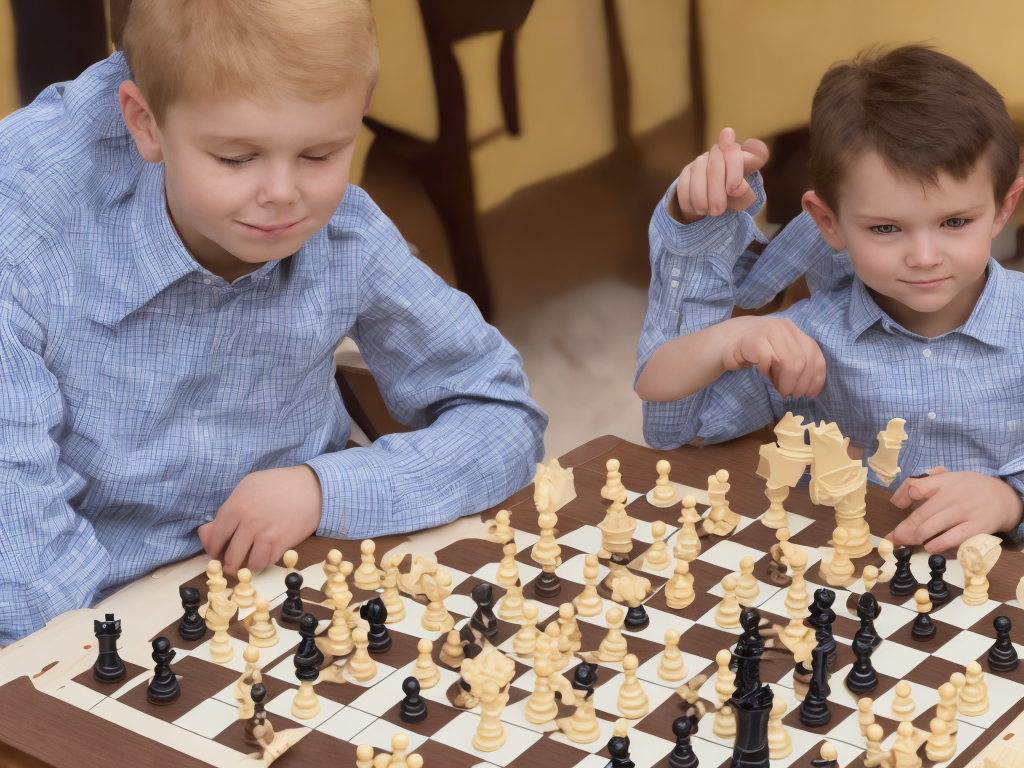
Chess is a wonderful game with an impressive history of more than a thousand years old. The game has been played by millions of people around the world and is known for its strategic complexity. Hence, it can be a bit difficult to explain chess strategy to a 6-year-old in a way that they can understand and enjoy learning. However, with the right approach and techniques, it can be done with ease. Here are some tips to follow on how to explain chess strategy to a 6-year-old.
1. Introduce the Pieces of Chess
The first step to explaining chess strategy to a six-year-old is to introduce them to the pieces on the board. The pieces are the foundation of the game and are the building blocks required to form strategies. There are six different types of pieces: the pawn, rook, knight, bishop, queen, and king. Make sure you explain each piece’s unique way of moving and basic rules regarding taking an opponent’s pieces.
2. Demonstrate Basic Rules of Movement
Once you've introduced the different pieces, start demonstrating the basic rules of movement for each piece so that children can understand their specific movements. Start with the pawn- the piece that a player will use the most in the opening game. Explain that pawns always move forward, and how they capture a piece diagonally in front of them.
Then move on to explain how the rook moves either horizontally or vertically, while the knight moves in an L-shape pattern, two squares in one direction, and then one square perpendicular to it. The bishop moves diagonally and can only move to squares of the same color as the square it is on, while the queen is the strongest on the board and moves in any direction she wants. Finally, explain the king's role and how it moves one square at a time but can never move into a position where it is under attack.
3. Explaining Checkmate
One of the objectives of playing chess is to checkmate your opponent's king, meaning the king cannot make a move without being attacked by an opponent piece. It is important to explain this rule of the game in a simplified manner if you want the child to be intrigued and understand the goal. You can even create a short video or demonstration to illustrate how checkmate occurs, which will make the idea stick better in the child's mind.
4. Start with Easy and Simple Strategies
Next, start with the most basic strategy, such as moving one piece at a time, protecting that piece and capturing the opponent’s piece. Explain how to spot weaknesses on the board and how to take advantage of them. Encourage the child to make their moves and remind them of their strengths and weaknesses as the game goes on.
5. Focus on One Strategy at a Time
Children will find it difficult to focus on multiple strategies at the same time, so it's best to focus on one strategy at a time. For instance, focusing on controlling the center of the board, or trying to checkmate with a queen and knight combo. This will help the child to understand each strategy individually before incorporating them into a more complicated plan.
6. Encourage Practice Games
Playing games is a great way to help children learn how to apply the strategies you taught them. During practice games, point out the strategies they can use and celebrate when they succeed.
7. Avoid Muddling Them with Advanced Concepts
It's important to understand that children's brains are not yet fully developed, and their attention span is quite limited. Avoid using complex terms like "en passant" or "castling" until they have a good understanding of the basic rules and strategies. Too many complex terms can confuse them, and might hinder their interest in the game.
8. Make Learning Fun
The most important point is to make learning fun. Involving stories and visuals to illustrate the ideas will surely keep the child engaged. Using toys that represent the pieces or creating little games that involve the different strategies can help the child understand better and make it easier for them to grasp the concept.
9. Reward Their Improvement
Children respond very well to positive reinforcement. Little rewards like praise, a favorite snack or a fun outdoor activity can be a great motivation for them. As they continue to improve, you can introduce more complex strategies that will make them confident and enjoy playing the game.
In conclusion, teaching a 6-year-old chess strategy requires simplicity, patience, and fun. When introducing chess to a young child, it's essential to start with the basics and move gradually to more advanced concepts. It’s equally important to make the learning process fun and engaging, include them in practice games, and incentivize them to keep improving. Thus, with proper guidance, any six-year-old can learn how to play chess and enjoy the game!
 Self-Instruct
Self-Instruct